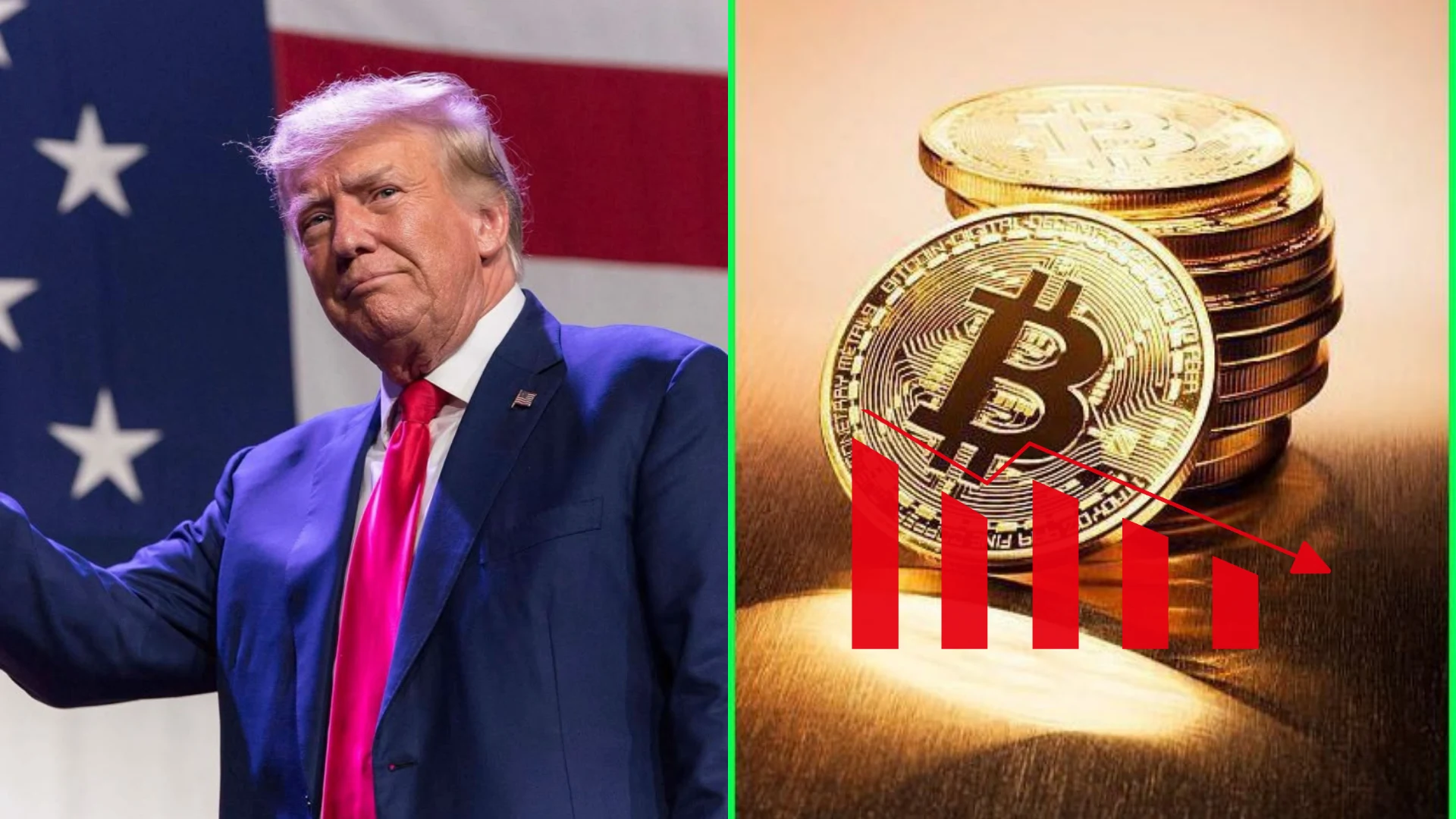Bitcoin’s $83K Rally Crushed by Trump’s 145% Tariff Shock After U.S. Inflation 2.4% Drop
0
0

The American economy provided a positive surprise recently, as March inflation data was better than expected. The Consumer Price Index increased only 2.4% year-over-year, below the expected 2.6% rise. Core CPI, which excludes volatile food and energy prices, also eased to 2.8% from February’s 3.1%. These numbers show the second consecutive month of lower inflation, suggesting the Fed might consider rate cuts later.
Financial markets showed initial optimism following the news. BTC price surged above $83,000, marking a 7.5% increase on hopes that the central bank might ease policy. ETH, Solana, and other leading digital currencies recorded similar advances. However, growing worries about increasing Trump tariffs quickly reversed this upward trend. Bitcoin had fallen to around $80,500 by Friday and now hovers around $81,300, while Ethereum dropped more significantly to $1,538. The worldwide cryptocurrency market shrank, too, showing investor anxiety about growing macroeconomic risks.
Cooling U.S. Inflation Data Signals Policy Shift
As seen in image 1, inflation figures from the Bureau of Labor Statistics indicated gradually cooling price pressures, which many investors welcomed. March’s 2.4% headline inflation number included a monthly decrease of -0.1%, reinforcing the idea that the Federal Reserve’s tightening actions might be achieving their goals. The core Consumer Price Index also fell to 2.8%, marking its first drop below 3% in years.
Image 1 – Published on TradingEconomics, April 11, 2025.
These results sparked discussions suggesting that the central bank could adopt a more dovish stance soon. Markets started factoring in possible interest rate cuts later this year. The initial Bitcoin price surge mirrored this sentiment, with the cryptocurrency outperforming traditional markets as its appeal grew as a hedge against policy shifts and a potential winner from easier monetary conditions.
Tariff Escalation Clouds Market Optimism
However, the initial positive sentiment faded quickly as the news of continued trade tensions arrived. President Donald Trump increased duties on Chinese goods significantly to 145%. He also threatened new penalties against Mexican products over water rights issues. A previous 90-day pause on some tariffs had boosted markets temporarily, but these new actions renewed concerns about a wider trade conflict.
Investors responded swiftly. Stock values fell sharply; the Nasdaq 100 sank 6.3%, and the S&P index lost 5.5%. Digital currencies were not protected from this trend either. BTC price fell from its peak earlier in the week, dropping back to $80,500. ETH and Solana declined, too, as caution spread through worldwide markets. This decline highlighted how closely digital currencies and traditional finances are connected during macroeconomic stress.
Bitcoin’s Resilience Amid Uncertainty
Despite recent declines, BTC’s relative steadiness versus stocks has attracted analysts’ attention. The S&P index dropped more than 12% between April 2 and April 8. However, Bitcoin decreased less than expected, given its long history of volatility. Grayscale’s head of research observed that BTC’s resilience might indicate increasing independence from traditional markets.
The Bitcoin price surge and its capacity to remain near $80,000 amid market disruptions boosted its safe-haven potential. Analysts believe continued inflation reduction and geopolitical instability might create a favorable long-term environment for BTC. Comparisons to gold in the 1970s stagflation period support this idea despite Bitcoin’s shorter track record.
Cautious Optimism or Fragile Confidence?
The next few weeks are crucial for assessing the market’s direction. Investors await more CPI figures to verify whether inflation is truly falling consistently. At the same time, the central bank’s policy hints will be closely watched for any indications of a dovish shift. If rate cuts happen, cryptocurrencies might recover upward momentum, potentially leading to a Bitcoin price surge.
Nevertheless, significant risks persist. The continuing Trump trade war poses a real threat to global economic growth and investor confidence. The recent BTC climb, while temporary, reveals that macroeconomic factors influence crypto markets. These range from U.S. inflation data to trade policy. Whether optimism can outweigh uncertainty will define Bitcoin’s future trajectory.
The post Bitcoin’s $83K Rally Crushed by Trump’s 145% Tariff Shock After U.S. Inflation 2.4% Drop appeared first on Coinfomania.
0
0
 Manage all your crypto, NFT and DeFi from one place
Manage all your crypto, NFT and DeFi from one placeSecurely connect the portfolio you’re using to start.



